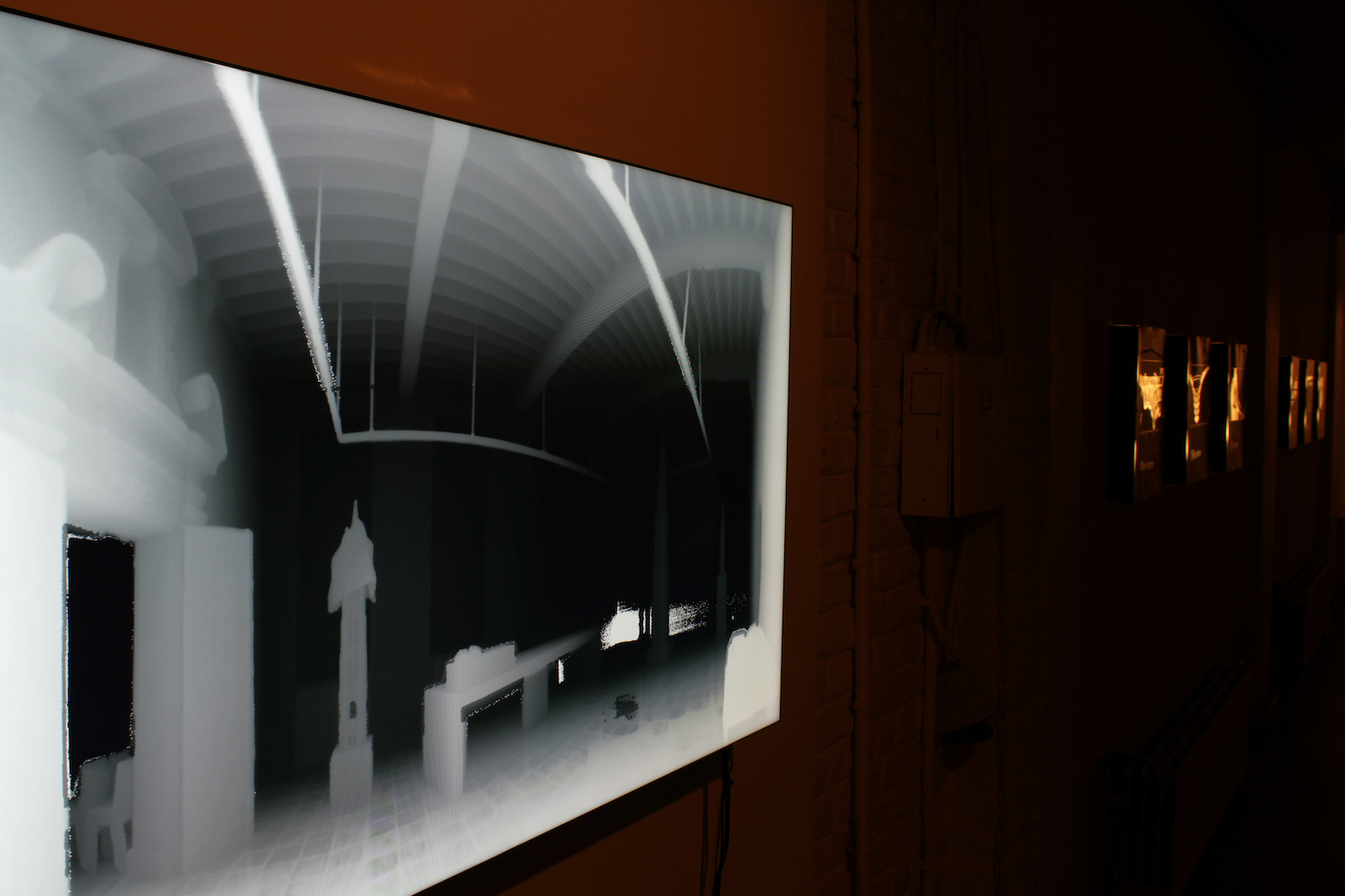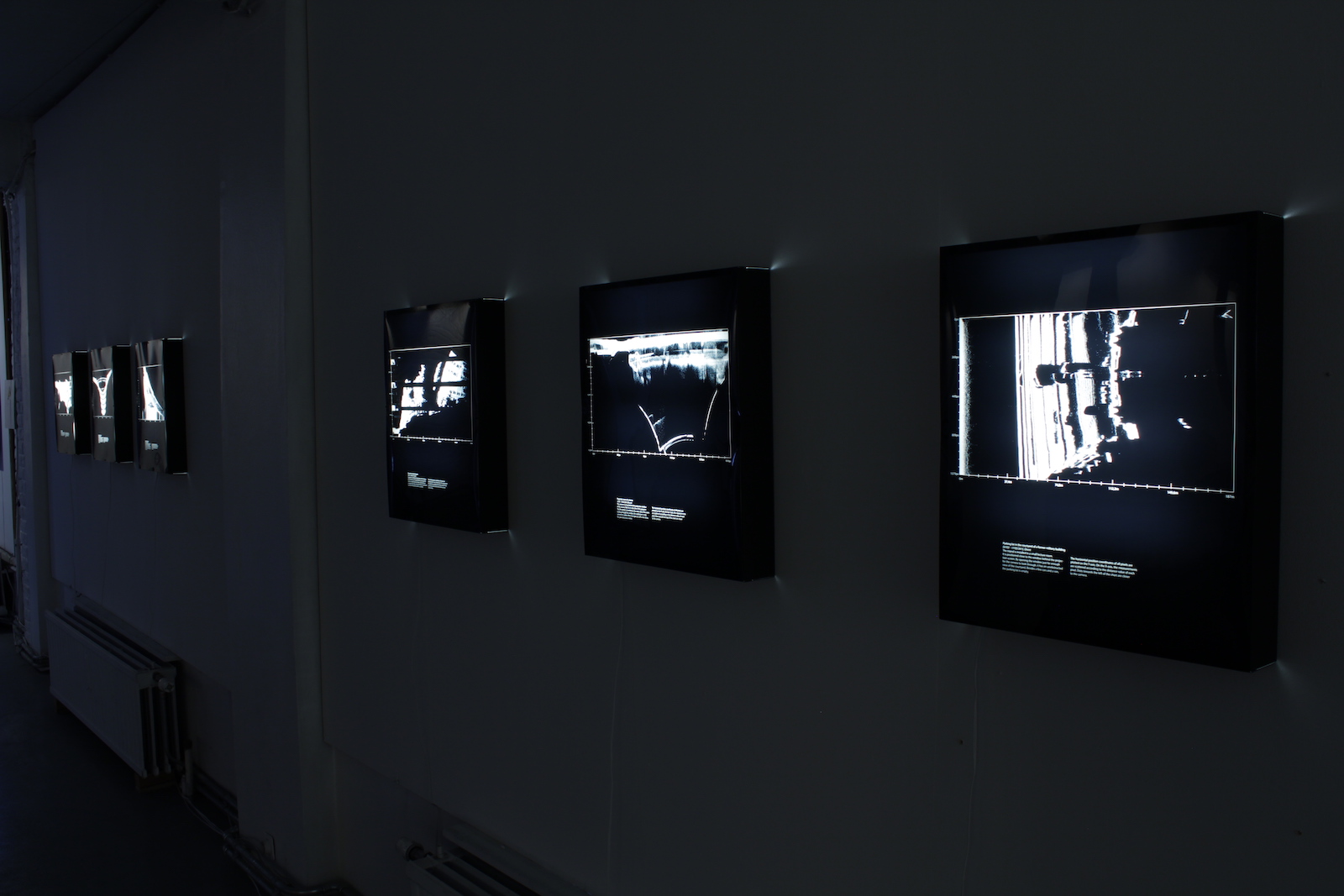Lightkeeping (installation version)
Elias Heuninck, 2015
Concept & realisation: Elias Heuninck / Voice over: Emi Kodama / Letters: ‘The Correspondence of William Henry Fox Talbot’ project / Technical assistance: Culture Crew & Vincent Jacobs / Editing coach: Fairuz & Anouk De Clercq
Production: Werktank & Auguste Orts / With the support of the Flemish authorities
Previously
2019 - Studio 3 Gallery, Kent University, Cambridge (United Kingdom)
2023 - Emergent, Veurne (Belgium)
2016 - Bozar, Brussels (Belgium)
2016 - NTAA, Zebrastraat, Gent (Belgium)
2015 - Imal, Brussels (Belgium)
Curious about creating a new image quality, Elias Heuninck made a digital camera. With a resolution of only one pixel, the sensor is a very simple one. Instead of capturing light, it measures distances. Just as a bat explores its surroundings by means of echolocation, the camera scans the space in a similar way, using laser light. Since every point in the image is a range measurement, the image becomes a map. One pixel at a time, the picture grows.
With an exposure time of four days (and up to four weeks), it is not the most practical camera around, but it allows Elias to work directly with the building blocks of the picture itself. The result of the scan can be considered a digital negative. Whereas the conventional camera is a darkroom that captures light, this camera is more like a lighthouse.
The video is a slideshow of scenes and letters. The letters are selected from an archive of the correspondence of William Henry Fox Talbot, a pioneer in negative-positive photography. Six light boxes display the raw image information as data plots. These plots were used during the development of the project to get insight into the camera’s measurements. As in-between images, they can be seen as pictures and read as charts.
Uit nieuwsgierigheid naar een nieuwe beeldkwaliteit, bouwde Elias Heuninck een digitale camera. De sensor is heel eenvoudig en heeft een resolutie van één enkele pixel. In plaats van licht op te vangen, meet de camera afstanden. Net zoals een vleermuis zijn omgeving verkent via echolocatie, scant de camera de ruimte met laserlicht. Aangezien elk punt in de scan een afstandsmeting is, wordt het beeld een plattegrond die met één pixel per meting groeit.
Door de lange belichtingstijd (vier uur tot vier weken) is deze camera niet de meest praktische, maar dit biedt de mogelijkheid om op een fysieke manier met de bouwstenen van het beeld om te gaan. Wat de camera opslaat tijdens het scannen kan bekeken worden als een digitaal negatief. Waar het conventionele fototoestel een donkere kamer is die licht opvangt, werkt deze camera eerder als een vuurtoren.
De video toont een slideshow van scènes en brieven. De brieven komen uit het archief van William Henry Fox Talbot, een pionier in negatief-positief fotografie. Zes lichtbakken tonen de ruwe beeldinformatie als dataplots. Tijdens de ontwikkeling van dit project werden deze plots gebruikt om inzicht te krijgen in de metingen van de camera. Het zijn tussenin-beelden, die kunnen worden bekeken als foto’s en gelezen als grafieken.



